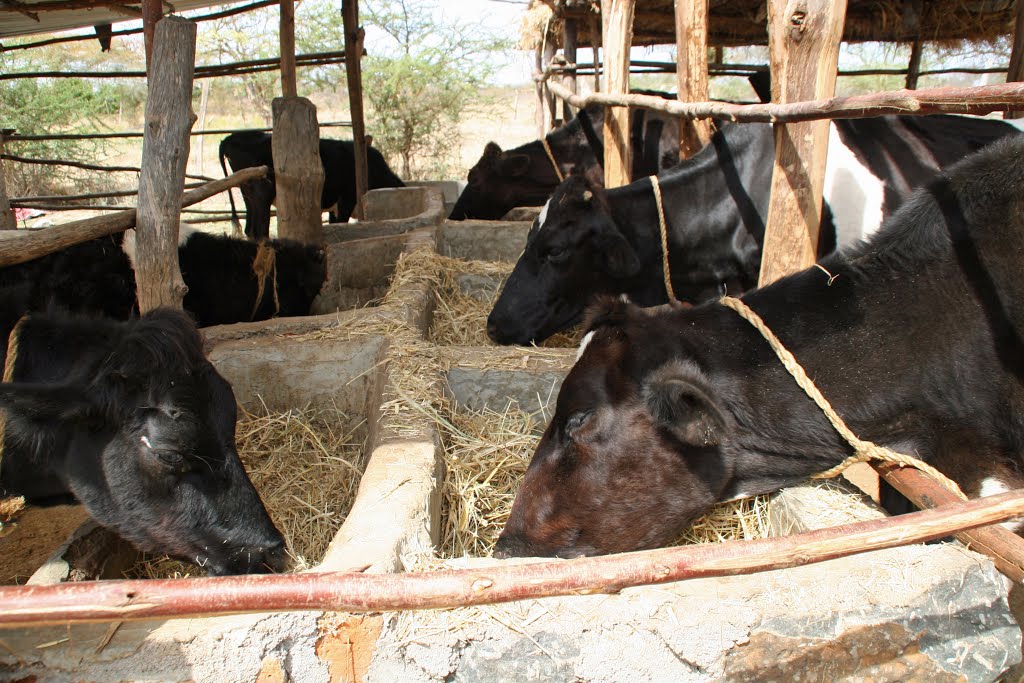
By George Munene
Feeding lactating cow
- While feeding a milking herd is old hat to some farmers, feeding high-producing cows properly in early lactation still remains a mystery to many farmers.
- As production increases feeding strategies and diagnosing nutritional problems become critical for profitability, optimum reproductive performance and minimum heat stress.
- To design an economic and efficient feeding strategy for milking cow requires knowledge of the Dry matter (DM) intake, milk yield and body weight changes. The farmer should consult a vet for advice on this.
Early lactation (0-60Days)
- Milk production is high with peak yield occurring seven to nine weeks after calving.
- Nutritional demands are very high during this period; dry matter intake is therefore also high.
- Cows may consume 18 per cent less dry matter than they require.
- There is a high response to concentrate feeding. Each additional kilogram of dry matter a cow consumes may support up to two to 2.5 more litres of milk
- Bodyweight loss may go up to 45kgs due to an increase in milk production relative to feed intake.
- Management should aim at maximising dry matter intake, avoiding excessive body weight loss, developing the milk production potential of the cow for long term effect. Poorly fed cows have a lower peak yield, shorter peak lactation period.
Mid lactation (60-140Days)
- After the peak period, milk production declines at about 2.5 per cent every week. The yield of high-producing cows drops faster than that of heifers. Concentrate feeding should be adjusted to milk yield and body condition. Roughage increase and high plane nutrition is very important to this stage if the cow is to easily conceive later on.
Late lactation (140 to 304days)
- Milk yield and nutritional demands fall steadily whilst body fat accumulation is increased. The animal should be in mid-pregnancy and feeding should be geared towards building the cow's body reserves in readiness for the next lactation. Feeding of concentrate should be minimal unless the quality of roughage is poor.
- The provision of supplementary mineral salts is important during this stage.
Peter feeds his milking cows each on a 25-30kg mixture of maize silage and bhoma rhodes hay. For concentrates, he gives his heard one-kilogram high yield dairy meal for every two litres of milk a cow gives above the first five litres. For salts, he opts for 125 grams/day of Maclik Super or Vital Maziwa.
Dry cow
- This is the stage where the cow is prepared for the next calving. It affects calving ease, the health of the calf and future milk production.
- The goal of feeding at this stage is to maintain body condition and allow the cow to have plenty of exercises to minimise problems during calving.
- The cow should be in good body condition (carrying slightly excess amounts of flesh) when dried off and maintained in this condition until calving. The nutrient requirements of a dry cow differ to that of a lactating one.
- If the cow’s body is poor It can be fed with at least two kilogrammes of concentrates per day. If concentrate intake is skipped, low-quality forages will not meet dry cow nutrient requirements and predispose the cow to metabolic disease like milk fever and dystopia
- A good mix of grasses and legumes is the most desirable. Napier grass less than three feet (wilted) + legumes e.g njahi(labalab),sesbania calliandra and leucaena.
- Mineral supplements are also necessary to avoid white muscle disease
The drying off stage for Chirchir begins at the seventh month, he steams up his cows for two months by giving them freely available feed (usually 25-30kg/cow), 2kg of standard dairy meal daily rising to six kilograms two weeks to calving. He is currently trialing dry cow dairy meals that have been introduced to the Kenyan market. He also gives drying salts (vital dry). He cautions farmers against the conventionally held notion that a steaming up diet should include calcium. “You should let your cow generate and use up her own reserves of calcium and replenish her after giving birth. Giving too much calcium to your cow whilst it is pregnant makes her hold her own and leads to milk fever post-calving.
|
Dry matter (kg/day) of hay by different stock |
||
|
Animal |
Grass |
Hay |
|
Cow |
7-13 |
3.5 |
|
Heifers |
5-9 |
1-3 |
|
Young stock |
2-3 |
1 |
















Comments powered by CComment